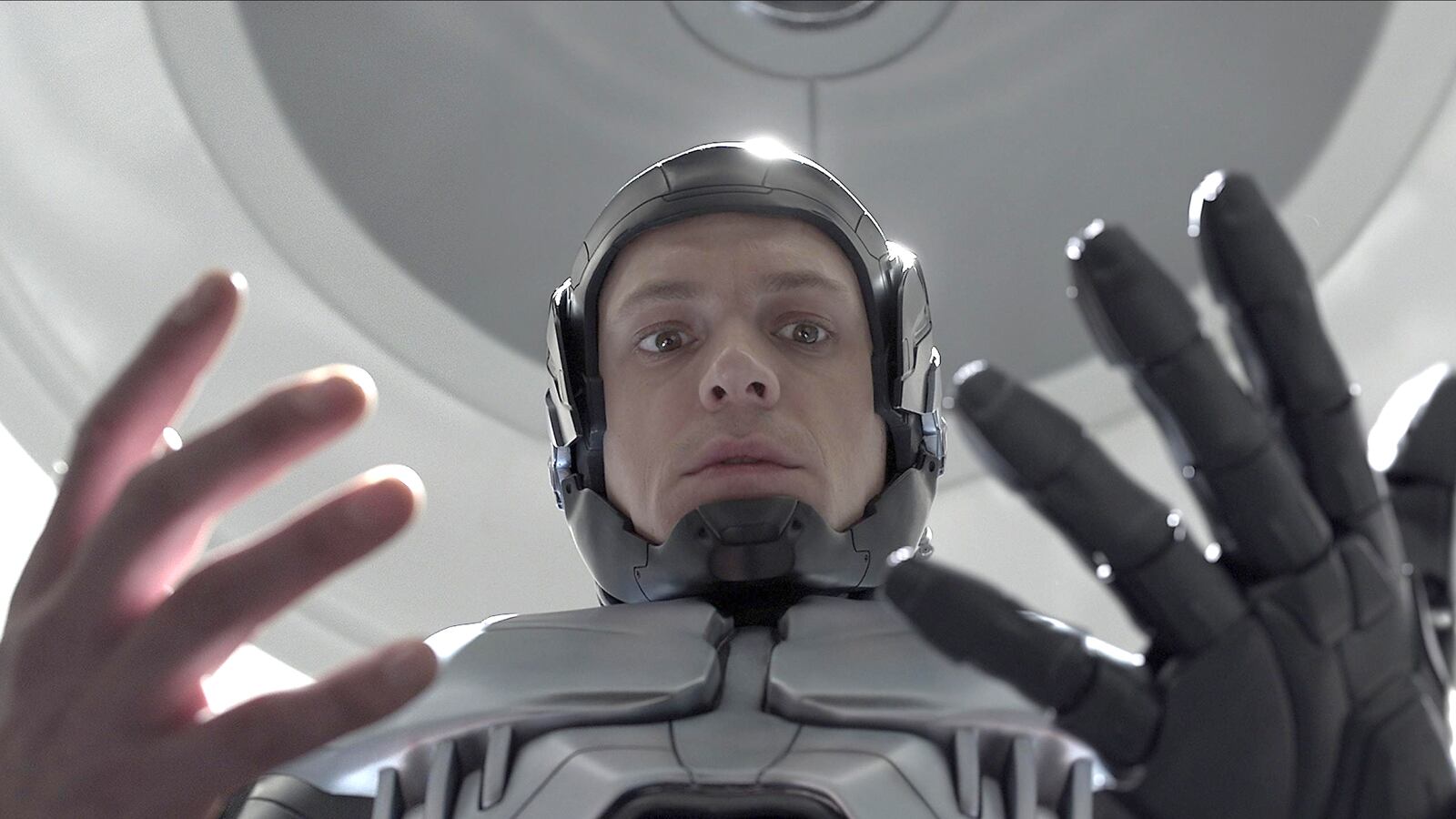From The Six Million Dollar Man to Inspector Gadget to Robocop, humans with bionic body parts have become commonplace in fiction. In the real world, we use technology to restore functionality to missing or defective body parts; in science fiction, such technology gives characters superhuman abilities. The future of cyborgs may hinge on that distinction.
The Defense Advanced Research Projects Agency (DARPA) plans to develop a brain implant that links human brains to computers. Under the Obama administration’s Brain Initiative, DARPA has developed eight programs designed to enhance human physical and cognitive capabilities. The Neural Engineering System Design program seeks to “bridge the bio-electronic divide” via a small implant that acts as a translator between the brain and the digital world, giving humans improved sight and hearing.
DARPA’s other projects include nanotechnology that stimulates organ self-repair, a neural implant for memory creation and retrieval, and sensors that glean information from the body’s nervous system “at a rate necessary to control complex machines.” The latter seeks to provide amputees the ability to feel via prosthetics, combatting limb loss with a “near natural sense of touch.”
Thanks to brain-computer interfaces, amputees and paraplegics can now control bionic parts with their minds. The first mind-controlled prosthetic arm and leg debuted in 2013, and year later, a double-amputee used two mind-controlled arms at once.
Exoskeletons like Ellen Ripley’s power-loader from Aliens and Tony Stark’s Iron Man suit use similar technology to translate brain signals into movement. The 2014 World Cup began with a paraplegic standing up and kicking a soccer ball. In 2014, the U.S. Army began testing its weaponized exoskeleton TALOS, which resembles the suits worn in Edge of Tomorrow and enhances the senses and strength of wearers while also monitoring vital signs.
NASA developed an exoskeleton to help astronauts train for space missions and get off-Earth exercise. If you’ve ever wanted to curl 100 pounds in each hand you could hope to be reborn as Andre the Giant, or you could wear this body extender developed by Italy’s Perceptual Robotics Laboratory or the Elysium Exoskeleton created by a YouTube user called Hacksmith.
Bionic technologies, which also include eyes and ears, were designed to restore functionality to people who have experienced trauma, injury, or illness. But it won’t be long before people with bionic body parts have greater abilities than those who don’t. Before Oscar Pistorius’s life took a tragic turn, he crushed the Paralympics and wanted to run in the Olympics, but the IAAF blocked him on the grounds that his carbon-fiber blade-shaped prosthetic legs gave him an advantage over other athletes.
The ban was largely a result of a 2007 report that asserted Pistorius’s prosthetics allowed him to use 25 percent less energy than other runners. After a 2008 study from Rice University argued that Pistorius was “physiologically similar but mechanically dissimilar,” the IAAF reversed its ruling, but Pistorius narrowly missed qualifying for the 2008 Olympics. He ran in the 2012 Olympics and was eliminated in the semi-finals. Soon there will be little question that bionic limbs are advantageous. The world’s first Olympics for cyborgs, the Cybathlon, will take place this October in Zurich, featuring athletes with “assistive technologies” in six different events.
Cyborg technology doesn’t stop with prosthetics and exoskeletons. Neil Harbisson, who was born colorblind, hears colors via a camera that sends images to an implant inside his skull, which translates light frequencies into sound frequencies. He can also hear UV and infrared light and can connect to the Internet and other people’s cameras via Bluetooth. Harbisson is the first government-recognized cyborg—U.K. officials allowed him to take his passport picture while wearing his device, acknowledging that it’s part of who he is.
Harbisson co-founded the Cyborg Foundation designed to “help humans become cyborgs” and to promote rights for cyborgs. Harbisson notes that cyborgs don’t have legal protections and are often denied entry into department stores, cinemas, and supermarkets. In 2012, Steven Mann was assaulted and ejected from a Paris McDonald’s for wearing EyeTap augmented reality glasses. Google Glass also provoked a backlash, prompting some establishments to put Glass-banning decals on their doors. “Glassholes” were attacked in bars and on the streets. Stop the Cyborgs, whose mission is to fight wearable technology that might compromise others’ privacy, declared victory when Google stopped making Glass in 2015.
Humans have long used technology to enhance their abilities—we wear glasses and contacts, replace our knees and hips with titanium, and rely on pacemakers to regulate our heartbeats. Given that our cell phones are virtually glued to our hands, it’s worth asking whether we’re cyborgs already. How would merging with machines change us? As the saying goes, “All progress is change, but not all change is progress.” Time will tell which one applies.






